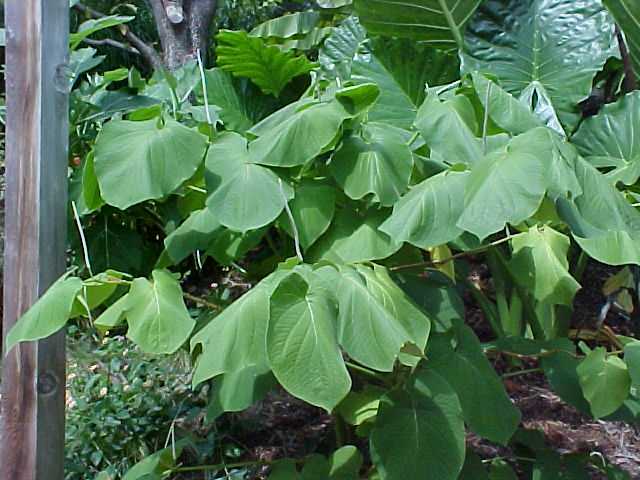Root Beer Plant
Tropical. Move indoors to overwinter
Mammal Browse: No
Invasive: No
Toxicity: There are contradicting reports on the safrole content of the leaf oil, ranging from almost zero to 45%. Several monoterpenes (limonene, cineol and camphor) have been found. Despite being quite toxic, safrole has a pleasant flavour; it occurs as a trace component in many essential oils (e.g., star anise, nutmeg and even black pepper). It is the main aroma component of Piper auritum.
Hardiness: USDA Zone 8 - 11
Uses: As an alternative to sassafras oil or as a source of essential oil containing Safrole, the chemical raw material for the manufacture of Heliotropin (Fragrance material) and Piperonyl Butoxide (Pyrethum synergist).
In Panama it is used as a food condiment and as a fish bait (Joly). In Mexico it is used as a house plant because of the heart shaped colourful leaves.
Flower: Mid Summer, White/Near White
Description: "Soft-wooded aromatic shrub 1-2 m or tree to 6 m high; leaves ovate to ovate-elliptical, acute or subacuminate, 20-30 (-40) cm long, 12-20 (-25) cm broad, the margin densely white-ciliate; spikes whitish to light yellow, pendulous, 10-25 cm or more long, 3-5 mm thick, fruit 3-gonous." (Adams, 1972)
Growth Rate: In it's native habitat, it appears to be a fast-growing, relatively short-lived, treelet.
Cultivation: Requires consistently moist soil; do not let dry out between waterings
Problems: None found
Native To: Tropic Mesoamerica (Southern Mexico, Guatemala, Panama, Northern Colombia)
Location(s) In Park: Zone 1
Date Entered: 09/01/2004
Photo Source:
Gernot Katzer's Spice Pages
Information Source:
Gernot Katzer's Spice Pages
Rhodium Chemistry Pharmacology Links
Hawaiian Ecosystems At Risk Project
Dave's Garden
|
